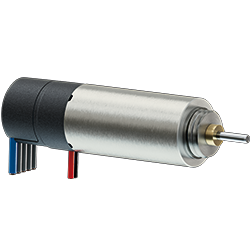PA Cyber engineering students build own 3D printers
"The 3D printer camp is one way of showing these students it's worth the extra work."
HARRISBURG, Pa., Aug. 21, 2014 -- Learning to build and operate their own 3D printers is both a reward and an incentive for Pennsylvania Cyber Charter School students who have an interest in engineering.
"PA Cyber's School of Engineering requirements are 26 credits for graduation instead of 22, and there's a lot more math and science," said Director of STEM Education and Outreach Joel Cilli. "The 3D printer camp is one way of showing these students it's worth the extra work."
Meeting for five-day summer camps at PA Cyber regional offices in Wexford and Harrisburg, seven to 10 science-oriented high school students at each location spent the first three days each building their own Printrbot Simple Maker's Edition 3D printers under Cilli's guidance.
"The last two days of the camp we ran the printers all day waiting for errors to present themselves. We fine-tuned the calibration to resolve any errors, and eventually got everything to the point that the students were ready to take them home," said Cilli. Participants' families paid for the kits, which were purchased at a discount through the school.
"This program is a big incentive for a student to take on the challenge of School of Engineering," said Cilli. "We guide the students to build 3D printers, and along the way we teach them how it works. We analyze the parts and their functions as we build."
"I really like engineering, robots and electrical engineering and stuff like that," said Matthew Downing of Cranberry Township, a freshman.
Ryan Kish, a sophomore from Aliquippa, is a big fan of the video game Minecraft, designing original "skins" (color schemes) for players in the game. Like others in 3D printer camp, he uses Tinkercad and other CAD software to model three-dimensional designs.
Joe Samo of Perrysburg, a senior, said, "I've been prototyping machine parts, and a 3D printer makes it a lot easier."
"I like engineering types of activities. This is my first time using 3D printers," said Jacob Young, a sophomore from Fombell.
Brothers Ian and Luke Switzer of Volant, PA Cyber juniors and veterans of FIRST Robotics competition, attended last summer's PA Cyber 3D printer camp at Greensburg. They signed up again to get the new, improved Printrbot kit.
"Now we can print twice as fast, and it has quality upgrades over last year's printer," said Ian.
A 3D printer is a device that layers melted plastic in thin lines that gradually build a solid object. Cilli said 3D printing is changing the prototyping and fabrication processes of the industrial world.
Students can download many existing 3D models freely available on the Internet, and they can use CAD software to learn to create their own. In calibrating and operating the printers, they learn how different speeds and density settings change the results. Cilli said the building process helps students learn to think mechanically.
"Larger objects can take hours to print, so students who have to share printers in a class end up with very limited access," said Cilli. "We wanted kids to have unlimited access, so building their own printers was a better approach."
Students enrolled in the PA Cyber School of Engineering who weren't able to attend 3D printer camp can ask Cilli to custom print three-dimensional parts for them.
"They email me the model; I print it and drop it in the mail to them. This way, we can reach all of School of Engineering with 3D printing," he said.
The Pennsylvania Cyber Charter School is Pennsylvania's premier K-12 online school, providing a tuition-free public education with the latest technology and best curriculum, and state-certified, highly qualified teachers. Visit www.pacyber.org, or call 1.888.PACYBER (1.888.722.9237).
Featured Product

FAULHABER MICROMO - Impressive accuracy through the latest chip technology
With the launch of the IEP3, FAULHABER expands its product line with an incremental encoder which, thanks to the latest chip technology, achieves a very high resolution and accuracy. With a diameter of just 8 mm, the IEP3 is very lightweight and compact yet still offers a resolution of up to 10,000 lines per revolution - made possible by the latest chip technology with high interpolation. In the standard version, the resolution is freely programmable from 1 - 4,096 lines per revolution. Moreover, the chip technology that is used ensures a high positional accuracy of typically 0.3 °m as well as a high repeatability of typically 0.05 °m thanks to accuracy compensation.
